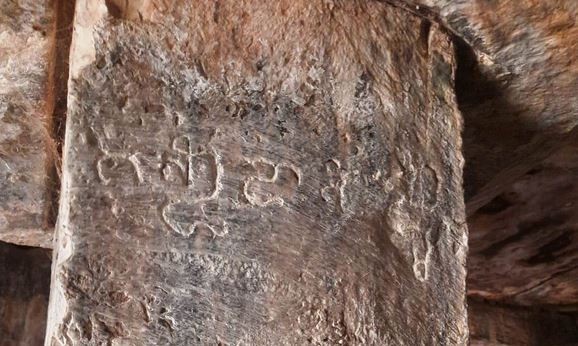- Recent archaeological discoveries in Mudimanikyam village, Nalgonda district, have revealed two Badami Chalukya temples dating back 1,300-1,500 years and a label inscription from the 8th or 9th century AD.
- These discoveries illuminated the region’s rich historical legacy.
Ancient Mudimanikyam Temples
- The Mudimanikyam Temples, built between 543 AD and 750 AD, have the unique Kadamba Nagara style in the Rekha Nagara format, which is uncommon in Telangana.
- Architectural Significance: Research emphasises the value of these temples as historical records of the Badami Chalukya period. With modest renovation, these can be valuable artefacts of Telangana’s historic architecture.
- Aside from the Badami Chalukya temples at Alampur, these temples are outstanding examples of that era’s architectural prowess.
Label Inscription: Discovery
- The label inscription, discovered on a pillar of a collection of five temples in the town, dates back to the eighth or ninth centuries AD.
- Meaning: While the actual meaning of the inscription, ‘Gandaloranru,’ is unknown, ASI says it may represent a heroic title, with ‘Ganda’ in Kannada meaning ‘hero.’
- Historical Context: The presence of the inscription suggests that five temples known as Panchakuta existed during the late Badami Chalukya dynasty. However, these temples are no longer in use, with one missing the Shivalinga and the other housing a Vishnu image.
Badami Chalukyas’ Legacy and Achievements
- Pulakeshin I established the Chalukya dynasty in 550, with Badami (Vatapi) in present-day Karnataka serving as its capital.
- The Badami Chalukyas ruled over areas that included modern Karnataka and substantial sections of Andhra Pradesh.
- During Pulakesi II’s reign, the empire extended northward, blocking Harsha’s advance and conquering the Vishnukundins in southeastern Deccan.
- Diplomatic Relations: During his reign, the dynasty maintained diplomatic relations with the Chinese and Persian empires, emphasising its worldwide status.
- Vikramaditya Dynasty: The dynasty saw a comeback under Vikramaditya I, who ousted the Pallavas from Badami, and reached its pinnacle under Vikramaditya II, who seized Kanchipuram from them.
- Decline and End: In 753, Rashtrakuta Dantidurga deposed the final Badami Chalukya king, Kirtivarman I, bringing the dynasty to an end.
Cultural feats
- Art and Architecture: The era saw the rise of Vesara architecture, which combined South Indian and North Indian forms and was exemplified by sites such as Pattadakal, Badami, and Aihole.
- Coinage: Chalukya coins included legends in Nagari and Kannada scripts, with motifs like as temples, lions, and lotuses.
- Religious Patronage: Originally followers of Vedic Hinduism, the Chalukyas later adopted Shaivism, cultivating sects such as Pashupata, Kapalikas, and Kalamukhas while also encouraging Jainism.
Government and Administration
- Military Prowess: The Chalukya army, which included infantry, cavalry, and a formidable navy, used novel tactics, such as intoxicating elephants before battle.
- Administrative Structure: The empire was organised into provinces, districts, and smaller administrative divisions, with feudal lords ruling autonomous areas.
Source: https://timesofindia.indiatimes.com/city/hyderabad/archaeological-marvels-badami-chalukya-temples-and-inscriptions-discovered-along-river-krishna/articleshow/107919789.cms

